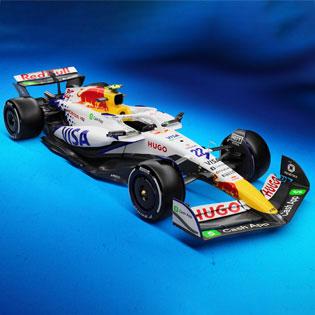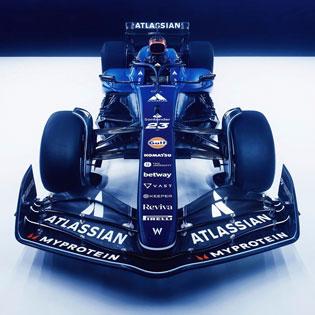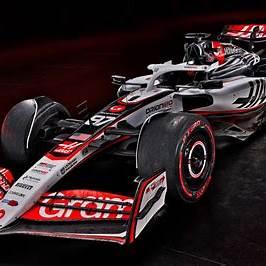Why Formula 1 Is More Popular Than Ever: The Rise of Modern F1
Formula 1 is no longer just a European motorsport watched by die-hard racing fans. It’s become a global entertainment powerhouse, captivating millions of new fans across the world, especially in places like the United States, Asia, and Latin America. From sold-out circuits in Miami and Las Vegas to streaming spikes on race weekends, it’s clear: F1 is having a moment.
So what changed? Why has a sport once seen as niche suddenly become part of mainstream culture?
Let’s explore the reasons Formula 1 is more popular than ever and why this surge shows no signs of slowing down.
1. Drive to Survive: Netflix Supercharged F1’s Appeal
There’s no denying the power of storytelling. Netflix’s Drive to Survive documentary series revolutionized how fans connect with the sport.
Launched in 2019, the show gave audiences a behind-the-scenes look at drivers, team bosses, rivalries, and high-stakes drama that even longtime fans had never seen. Suddenly, viewers weren’t just watching cars go fast, they were invested in the people behind the helmets.
The result?
-
Massive growth in U.S. viewership
-
Younger audiences engaging for the first time
-
Increased social media buzz from new fans around the world
The emotional drama, personal rivalries, and cliffhanger-style editing turned Formula 1 into reality TV with carbon fiber and 200-mph plot twists.
2. A Younger, More Diverse Global Audience
Traditionally, F1 was seen as elite, Eurocentric, and mostly male. But that’s changed dramatically in recent years.
Today’s F1 fans are:
-
Younger, with a surge in interest from 18–34 year olds
-
More diverse, especially in the U.S. and Asia
-
More female-driven, thanks in part to relatable content and social media
The sport has embraced this shift with new marketing campaigns, a strong presence on platforms like TikTok, Instagram, and YouTube, and accessible commentary that invites fans in rather than keeping them out.
F1 is no longer just for engineers and gearheads—it’s for everyone who loves adrenaline, rivalries, and world-class competition.
3. North American Expansion: F1 in the U.S. Is Booming
For years, F1 struggled to capture the American market. NASCAR and IndyCar reigned supreme. But now? F1 is exploding in popularity across the U.S.
The evidence:
-
Miami Grand Prix and Las Vegas Grand Prix are huge sell-out events
-
ESPN viewership has doubled in just a few seasons
-
Brands like Red Bull, Mercedes, and Ferrari are becoming household names
Formula 1 has leaned into American entertainment culture: celebrity-packed paddocks, world-class event production, and high-stakes drama have turned each race into a Hollywood-worthy weekend.
McLaren F1 Lando Norris Women's Drivers T-Shirt
Show your support for Lando Norris with this stylish women's tee that combines comfort and team spirit
Product information
SGD 114.27
Product Review Score
4.86 out of 5 stars
157 reviewsProduct links
4. Tech Meets Entertainment: The Perfect Modern Sport
We live in a tech-obsessed world—and F1 is the most technologically advanced sport on the planet. Hybrid engines, data-driven strategy, AI-assisted pit calls, and wind tunnel simulations make every race a showcase of human skill and machine intelligence.
F1 appeals to fans who love:
-
Cutting-edge automotive engineering
-
Data, metrics, and race analytics
-
The intersection of sport, science, and strategy
This blend makes Formula 1 uniquely addictive in the digital age, where viewers want depth, nuance, and brainpower along with the spectacle.
5. The Personalities Are Larger Than Life
Formula 1 has always had heroes, villains, and legends—but now, their stories are reaching far more people.
Today’s drivers are:
-
Media-savvy and relatable, like Lando Norris and Charles Leclerc
-
Activists and role models, like Lewis Hamilton
-
Unapologetic competitors, like Max Verstappen
They’re not just athletes. They’re brands. They connect with fans across Twitch streams, YouTube vlogs, Instagram stories, and post-race interviews that feel unscripted and real.
These personalities give the sport soul, and fans follow not just the championship, but the human journeys behind the wheel.
6. Social Media and F1 Memes: A Digital Renaissance
F1’s social media game is top-tier. From quick highlights to race-day memes and real-time drama updates, Formula 1 is perfectly built for modern internet culture.
Platforms like:
-
Reddit’s r/formula1
-
X (formerly Twitter) race threads
-
YouTube Shorts and TikTok recaps
have given fans endless ways to engage between race weekends. You no longer have to watch every lap live to be part of the conversation.
In fact, the meme culture around F1 is helping it go viral, drawing in fans who didn’t even know they liked motorsport until they saw a funny clip of a pit crew mishap or a team radio meltdown.
Mercedes AMG Petronas F1 Lewis Hamilton Cap 2024
Show your support for Lewis Hamilton with this stylish cap that adds a touch of race day vibes to any outfit
Product information
SGD 59.61 SGD 55.35
Product Review Score
4.12 out of 5 stars
20 reviewsProduct links
7. More Races, More Countries, More Access
F1 has expanded its calendar and global footprint, making it more accessible than ever. With 24 races scheduled in 2024, fans have near-constant content throughout the year.
Key growth moves:
-
Adding races in the Middle East and Asia
-
Returning to historic tracks in Europe
-
Offering free content, highlights, and race replays online
The no-download F1 web app and streaming partnerships make following the sport easy, mobile-friendly, and global. This accessibility lowers the barrier to entry for new fans.
8. A Shift Toward Sustainability and Social Responsibility
Today’s fans care not just about the race, but about what the sport stands for.
Formula 1 has pledged to be net carbon zero by 2030, with initiatives like:
-
Sustainable fuel development
-
Greener logistics and transport
-
Electrified paddocks and emissions reduction
These efforts are bringing eco-conscious fans into the fold—people who want thrilling sport and a commitment to the planet.
Conclusion: F1 Is in the Fast Lane of Global Pop Culture
Formula 1’s rise in popularity isn’t a fluke. It’s the result of smart media moves, engaging personalities, strategic globalization, and a sport that has evolved to meet the expectations of a modern, connected world.
With record-breaking attendance, booming viewership, and a flood of new fans joining the action every race weekend, Formula 1 has cemented itself as not just a motorsport—but a cultural phenomenon.
And with fresh rivalries, tech innovations, and wild race moments on the horizon, F1’s growth story is only just beginning.





